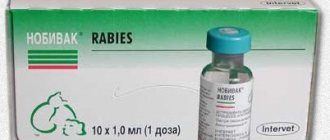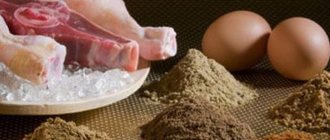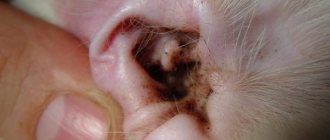Let's face it. There's something special about home-cooked food that no restaurant—no matter how fancy—can replicate. Nothing beats the delicious taste of home-cooked food.
What's worse about our cats? After all, they are part of the family too! But giving your cat leftovers from your plate is not healthy. But making her own dish is not only healthy, but it will also satisfy all your cat’s needs, and there will also be a piece of your love in this food.
And yes, it's much easier than you think. You can make great cat food with simple ingredients you may already have in your kitchen. It's fast, accessible and extremely fun. Why not?
In this article, we'll explain everything you need to know to become a better cat chef, from ingredients to recipes and helpful tips.
Why should you try cooking for your cat?
Besides the obvious pride you'll feel in creating delicious treats for your cat, there are numerous real benefits.
It's more natural. Cats are highly developed predators. A diet made entirely from commercial foods may satisfy their nutritional needs, but will not satisfy their carnivorous instincts.
It's healthier. Kittens have sharp, sharp teeth that were designed for slicing and tearing raw meat. Processed foods do not provide the same health benefits. There are countless benefits of natural foods for your cat's health.
Easier to digest. When your little predator chews your tasty food, a lot of saliva is released, which signals the cat's stomach to prepare important stomach acids, thereby improving digestion.
It's more fun. Once you prepare the recipes we have prepared for you below, you will be able to enjoy watching your cat. And believe me, watching her eat your super dish is a lot of fun.
Easier to control. The fact is that the choice of products and responsibility for the cooking process will be entirely in your hands. This means that nothing unnecessary will get into the cat’s diet. And believe me, it’s much easier than reading the ingredients of ready-made food.
These are just a few reasons to make your own cat food, but you can find many more reasons if you dig deeper into the world of cat cooking.
However, there is one very important question that needs to be answered before you start cooking!
Main types of ready-made treats for cats
Ready-made treats for cats are divided into 4 types:
- Neutral - intended for regular treats or rewards during training.
- Vitamin - contain vitamins and various microelements to enrich the cat’s regular diet.
- Nutritious - can replace a full lunch. They contain 100% natural meat of various varieties.
- Preventative - prescribed only by a veterinarian to solve health problems.
Some treats solve several problems at once, for example, treats, vitaminization and cleansing the surface of teeth from plaque.
Can they be used without veterinarian advice?
Treating cats, as a rule, does not require consultation with specialists, except in cases where it is necessary to prescribe treats of a preventive type. All other goodies can be given at your own discretion. You only need to monitor the amount of treats given out and treat without fanaticism. Otherwise, there is a risk that the pet will require “treats” as the main diet.
When I lived in an apartment and had a cat, I gave her treats every morning when I left for work so that she wouldn't get bored when she was left alone all day. Sometimes it seemed to me that from the moment I opened my eyes, the cat was already waiting with all its might for me to leave and for her to get her “yummy.” At first I gave a few pieces of treats (at that time there was a small choice, and I mainly bought cat pillows), but then the kitty wised up and stopped eating her breakfast, knowing that there would be a lot of tasty things ahead. Then I strictly reduced the goodies to one pillow.
Selection criteria for a specific animal
When choosing a treat for your pet, you should pay attention to the category of the treat. The same principle applies here as when choosing food:
- age;
- physical characteristics;
- state of the animal.
We must assume that crunchy snacks are not suitable for an elderly pet whose teeth have been ground down or have even been lost. But soft pate or lamb in sauce will be just right. The same applies to preventive treats. But here a doctor will come to the rescue and give specific instructions.
When choosing a treat, special attention should be paid to the composition of the product. The more meat it contains, the better the quality of the treat and the more benefits it will bring to your pet. Also, you should not abuse the products of those companies that specialize in producing cheap animal food. The treats may be inexpensive, but they are unlikely to benefit your pet.
The shorter the composition of the product, the better its quality (with the exception of vitamin supplements)
Should food be used raw or cooked?
This is a more complex question than it seems. Some experts recommend raw foods, while others insist on processed foods. The truth is that both types of homemade food—raw and cooked—have benefits for your little furbaby.
The most important factor in protecting your cat's health is a well-balanced diet.
When food is cooked, a lot of natural proteins and nutrients are lost. However, the treatment removes bacteria and other microorganisms that may pose a health risk to the kitten. Since childhood, we have been told about the dangers posed by raw food, such as worms.
But your cat's biology is built entirely around consuming small wild-caught animals. What seems dangerous to you is quite natural to her. The truth is that you can make food from raw ingredients and it will be completely safe for your cats. You just need to be selective with your ingredients and be mindful of food safety.
When meat comes from a healthy animal, it is almost certainly free of any pathogens. Bacteria only exist on surfaces that must be cleaned thoroughly and safely. Internal muscle tissue in healthy animals is free of dangerous microbes.
This is why raw, pre-ground meat is never recommended for kittens. When grinding, microbes are introduced into the muscle tissue, and it is impossible to get rid of them without heat treatment. Therefore, you should grind meat at home, because bacteria will not have time to multiply.
You don't have to choose one: raw or cooked. It is quite possible to find a compromise in preparing cat food. If you are confident in the quality of the raw product, then it is unlikely to harm your cat. However, sometimes it is not necessary to neglect heat treatment.
Remember: your cat is completely dependent on you for all her needs.
Review and composition of treat brands
global $ads_google;
//data-ad-slot=”2475549904″ $ads_google = empty($ads_google) ? false : true; ?> if ($ads_google == false) {?> $ads_google = true; ?> } ?> Let's take a closer look at competing brands of treats, what their positive and negative sides are.
| № | Name | Advantages | Flaws | |
| 1 | Gimpet, Germany | There is a whole line with different products, including low lactose milk and puddings for hair removal. | The pudding contains sugar that cats don't need, and other products contain a lot of grains. The downside is the large number of products from meat processing. | |
| 2 | Almo Nature, Italy | This product belongs to the premium class, since the raw materials for its production are suitable for human consumption. | It is difficult to determine the ratio of ingredients, since there is no such information on the packaging. The contents reveal the addition of sugar and salt, which is unnecessary for cats. | |
| 3 | Bosch Sanabelle, Germany | This delicacy belongs to the premium class, the line has a distinction for ages, and contains natural ingredients. | It is expensive and contains maize and cellulose, which are allergens. | |
| 4 | Dezzie, Russia | Contains natural products: the delicacy is based on tuna and poultry (duck and chicken). | There are no indications of vitamins and minerals in quantitative ratio, and the method of processing the raw materials is also unclear. | |
| 5 | TITBIT, Russia | The natural composition of the delicacy, the deliciousness of preparation through drying. There are seasonings in the form of oregano, thyme, dill, no thickeners, sugar, or preservatives. | The base is by-products. | |
| 6 | Applaws, UK | Based on mackerel and tuna fillets. | No | |
| 7 | Orijen, Canada | The delicacy contains fresh meat, no bones or offal. | No | |
| 8 | Mnyams, Germany, Austria, Netherlands | Natural composition, rich recipe in the form of sticks, pieces, mousses. | There are no precise indications of the antioxidants used. | |
| 9 | Molina, Austria | High-quality products with meat content up to 95%. There are products with tuna, beef, lamb, and shrimp. | No | |
| 10 | Felix | High in protein, Omega 6, vitamins and fatty acids. | The presence in the composition of powders, instead of natural products, the presence of sugars and yeast in the composition. | |
| 11 | Beaphar, Netherlands | A balanced composition and a product line rich in flavors. | Presence of sugars and yeast. | |
| 12 | Happy cat, Germany | The line includes products with different directions. | The ratio of antioxidants is not specified. | |
| 13 | Village delicacies, Russia | A very rich palette of different tastes, based on various natural ingredients. | Some foods contain starch. | |
| 14 | Sanal, Netherlands | A line to improve health, there are malt pastes, delicacies in various forms. | No | |
How to switch to homemade food
Pets are often like children, and they all have their own unique personalities.
Some are whimsical and capricious - they fly from one thing to another and prefer a life of excitement and rapid change. These opportunistic predators can embrace a new diet as if they've been waiting their entire lives for it.
Others prefer order, a daily routine - and they will learn and get used to new rules in their routine. It's not always fast and fun, more often it requires a lot of patience and understanding.
A gradual change in cooking habits is better for both you and your cat. Instead of giving your cat a whole pig at once, you can choose a few days a week for a small feast at home. You can offer your cat a new recipe 1-2 times a week and observe her reaction. It’s just like feeding babies.
But there is also another way. It involves mixing new food with old food, gradually replacing it in larger proportions until the cat gets used to the new diet.
Don't worry if your cat is less enthusiastic than you. You may think your cooking project is a masterpiece, but your cat knows exactly what she likes, and many cats can be incredibly stubborn. Be patient and take time.
Also consider your cat's age. It's hard to teach an old dog new tricks, but imagine how difficult it is to change the cooking habits of an adult cat!
Again, proper care of your beloved pet requires patience and authority. Show her the way forward with calm confidence and she will eventually follow. Even the most stubborn cats can be persuaded.
The benefit of homemade meals is that you can create meals that more closely mimic a healthy, natural diet. A diet that allowed cats to evolve over thousands of years into the perfect little predators they are today.
This means that food will be made mainly from three main ingredients: meat, bones and organs.
Cat food recipe Chicken stew
Composition of the product:
- 1/2 kg chicken, cut into small pieces
- 1 teaspoon olive oil
- A pinch of parsley, thyme, rosemary and marjoram
- Unsalted vegetable broth
- No more than 20 grams of sweet potatoes, carrots, celery and peas
Cooking method
- Fry the meat in olive oil
- Sprinkle with herbs and add vegetable broth, bring to a boil.
- Reduce heat and cook until meat is done
- Add the chopped vegetables and leave on the stove for another 45 minutes.
- Let cool to room temperature and serve.
- Store them in an airtight container for up to 3 days in the refrigerator, or portion and freeze.










